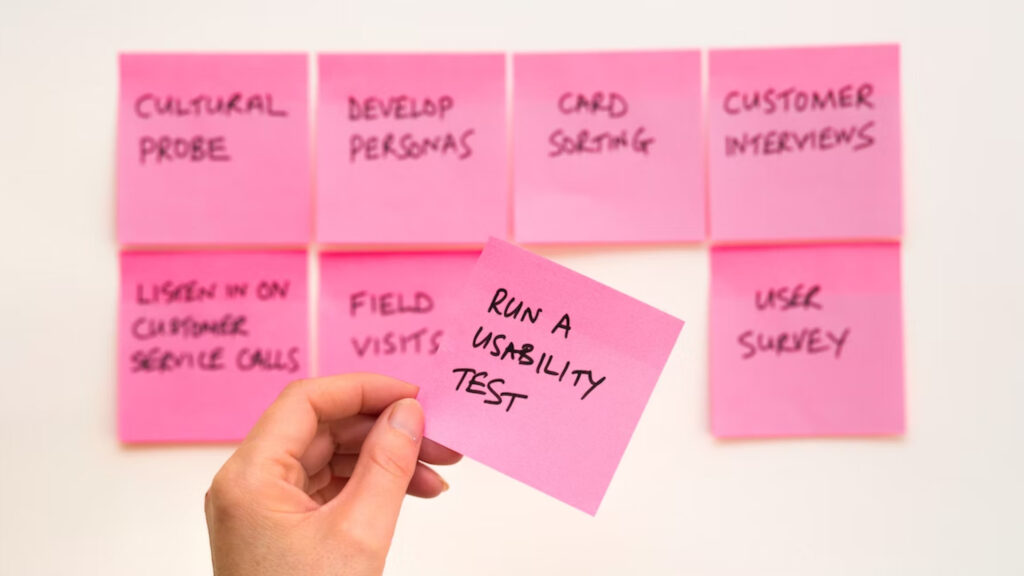
Guide To Mobile App Testing: Types, Challenges, And Best Practices For Quality Assurance
In 2008, Terminal 5 at Heathrow Airport was launched, but passengers could not access their luggage due to a malfunctioning baggage system. The software had been tested in simulations but failed in a real-world environment. As a result, 42,000 bags were lost, 500 flights were cancelled, and the airport authority suffered a loss of £16 million. This incident is a cautionary tale of the importance of thorough software testing. As mobile apps have become ubiquitous, it is crucial to have a comprehensive Mobile App Testing plan in place. A single app crash can lead to a 70% uninstall rate, and a slow load time can cause 70% of users to abandon the app.
This article delves into the various aspects of mobile app testing, including challenges, types, best practices, and other vital considerations. Consider partnering with us for comprehensive software testing services for reliable software delivery to your users. Our highly skilled, experienced, and knowledgeable QA professionals will work with you to ensure the delivery of high-quality products that meet and exceed customer expectations.
What Is Mobile Application Testing?
Mobile application testing evaluates the various aspects of a mobile app, such as its functionality, usability, stability, performance, and security. By testing the app, developers can identify and resolve any bugs or errors before the final launch, ensuring a robust product. Testing can be performed manually or using automation tools and software.
Types Of Mobile App Testing

Usability testing: This type of testing examines the user-friendliness of a mobile app in terms of its intuitiveness, navigation, and ease of use. Identifying issues related to the customer experience, such as bugs, is an example of mobile app usability testing that helps improve the overall user experience.
Compatibility testing: This non-functional mobile application testing verifies that an app can run smoothly across various operating systems, browsers, mobile devices, screen resolutions, network environments, and hardware specifications.
Performance testing: This type of testing evaluates the performance of a native or hybrid mobile app under different conditions, such as varying loads, mobile connectivity (3G, 4G, WiFi), document sharing, and battery consumption.
Interface testing: This testing covers all aspects of the user interface, including menu options, buttons, bookmarks, history, settings, and navigation flow. It can also include testing the connectivity between two operating systems.
Operational testing: This type of testing evaluates the operational readiness of a product, service, or system before it goes into production. It includes checking for backups, assessing recovery time in case of data loss, and verifying disaster recovery mechanisms.
Service testing: This testing examines whether an app’s services work correctly online and offline. It checks an API’s functionality, reliability, performance, and security.
Security testing: This testing verifies the security of an app’s data under different device permissions. It includes mobile app vulnerability testing to uncover vulnerabilities, threats, and risks associated with the app.
Functional testing: This type of testing verifies that all functionalities of a mobile app are executing correctly. The main goal is to validate the mobile app against the initial functionalities or requirements outlined.
Installation testing: This testing checks if an app is installed or appropriately uninstalled and if updates are applied correctly. It can also verify that the installed app has the features listed in the documentation.
Storage testing: This testing examines the app’s storage-related functionalities, such as storing and retrieving data from storage and adding, updating, or deleting data on the hard disk. It also checks the app’s behaviour in case of low or no storage. These are some common types of Mobile App Testing. However, each test may have challenges, which we will explore in the next section.
Mobile App Testing Challenges
Device fragmentation: One of the biggest challenges in Mobile App Testing is device fragmentation, which refers to the wide range of devices with different screen sizes, carrier settings, OS, and forms that users may use to access an app. Developing a mobile app testing strategy requires addressing device fragmentation to ensure its compatibility across all devices.
Third-party integrations: Mobile app testers often integrate third-party extensions without fully understanding their impact on the app’s current environment. It’s essential to test the functionality of third-party integrations as they bring different dependencies that need to be managed and tested to ensure compatibility with the app’s ecosystem.
Browser fragmentation: To ensure the app’s compatibility across different browsers, it’s crucial to test it on major mobile browsers such as Google Chrome, Mozilla Firefox, Opera, and Safari. Progressive web apps, which operate through browsers, also need to be tested.
OS fragmentation: Different mobile phones have different operating systems installed, so testing an app on all relevant OS versions is essential. With Android and iOS being the major mobile platforms, trying an app on all versions can be challenging.
App security: Security threats have become more dangerous, so it’s essential to conduct in-depth security testing of an app during the initial release phase. The app’s nature, OS features, and phone features all play a role in forming a security test plan.
Battery life: As the usage of batteries has increased significantly, optimizing the battery consumption for demanding apps is a significant obstacle for QA teams. Testing battery life consumption for various app scenarios is the only way to deal with this challenge. If an app consumes too much power, users are more likely to uninstall it.
Usability: Mobile App Testing plans often focus on functionality but neglect usability or exploratory testing. While functionality is essential, a poor user interface and experience can lead to poor app adoption. Striking a balance between functionality and usability is challenging for developers and testers.
Changing user requirements: As users’ needs change over time, developers must develop new features. However, these new features can also bring new bugs or errors. QA teams must stay informed of each update and conduct comprehensive mobile app regression testing.
These are some of the significant challenges involved in mobile app testing. However, understanding these challenges makes it possible to implement best practices for mobile app testing that will help overcome these challenges.
Mobile App Testing Best Practices
Define the scope of testing: It’s essential to clearly define the scope of testing, including which features and functionality to focus on and which to ignore. This helps to avoid wasting time on testing irrelevant aspects of the app and to ensure that the most critical areas are thoroughly tested.
Conduct cross-platform testing: Testing an app on multiple platforms, browsers, operating systems, and devices helps to identify and resolve compatibility issues. This ensures that the app will work seamlessly across various devices and environments.
Carry out app permission testing: Testers often overlook the importance of testing the combinations of permissions, which can negatively impact the user experience. For example, if a chat app has a camera feature, but the storage permission is set to ‘no’, the user won’t be able to access the camera. Therefore, testing all licenses is crucial to ensure a smooth user experience.
Conduct connectivity-related testing: The performance of an app can be significantly impacted by network connectivity. Therefore, it’s essential to conduct mobile app network testing before launching the app in production. This can be done using mobile app testing automation tools for network simulation.
Dealing with fragmentation: Mobile App Testing can be challenging across devices, operating systems, and browsers. A comprehensive mobile app testing platform should cover all these aspects, including:
- Running apps on various physical device configurations and OS versions
- Conducting manual and automated tests across emulators
- Providing access to cloud-based platforms to carry out testing on real devices
Carry out test automation: Test automation can significantly reduce the workload for testers and increase efficiency. While not all aspects of testing can be automated, automating repetitive and time-consuming tasks can free up resources for more critical testing efforts. This can include creating test scripts for regression, functional, and performance testing.
Utilize cloud-based testing: Cloud-based testing allows teams to access a vast array of devices and environments for testing without the need to purchase and maintain them in-house. This can save time and resources while providing a more comprehensive testing experience.
Focus on user experience: In addition to functional testing, it’s essential to focus on user experience testing. This includes testing for usability, accessibility, and overall user satisfaction. This ensures that the app is functional, easy to use, and appealing to users.
Incorporate security testing: Security testing is a critical aspect of Mobile App Testing, as mobile apps are often vulnerable to hacking and other security threats. This can include testing for vulnerabilities, threats, and risks associated with the app and implementing measures to mitigate them.
Continuously monitor and improve: Mobile app testing is not a one-time process but an ongoing effort. It’s essential to constantly monitor and improve the app by tracking user feedback, monitoring app performance, and staying up-to-date on the latest testing best practices and tools.
Mobile App Testing Process
To ensure a successful mobile app launch, it’s essential to have a well-defined testing process in place. This includes a roadmap for testing, outlining which test cases to explore and what results to expect.
Step 1: Gathering test cases: Before beginning the testing process, it’s crucial to list all the test cases that need to be explored and outline their purpose and expected results. This will help to define a clear roadmap for testing.
Step 2: Deciding on manual vs automated testing: After gathering test cases, the next step is to decide whether to run them manually or with the aid of test automation services. Automated testing is more efficient for small patients with predictable outcomes, while manual testing is more appropriate for testing various systems back to back.
Step 3: Preparing test cases for multiple functionalities: There are two main approaches to preparing test cases: requirement-based testing, which focuses on the performance of specific app features, and business-based testing, which assesses system functionality from a business perspective. Additionally, test cases can be divided into two broad categories: functional testing (such as unit testing, integration testing, and beta testing) and non-functional testing (such as security testing, performance testing, and usability testing).
Step 4: Continuously monitor and improve: The mobile app testing process is not a one-time event but an ongoing effort. It’s essential to continuously monitor and improve the app by tracking user feedback, monitoring app performance, and staying up-to-date on the latest testing best practices and tools.
Step 5: Conducting manual testing: While automated testing is widely used, it’s still essential to incorporate it, especially in an agile development environment. Starting with manual testing is a cost-effective approach, and building a team of manual testers will allow for simultaneous testing.
Step 6: Conducting automated testing: The focus should shift to computerised testing after initial manual testing. The results from manual testing will help determine which test cases should be automated. Choosing the right tools for mobile app testing is crucial for successful automation testing. Consider tools that support various platforms, have rich features, and can handle reusable, change-resistant test cases.
Step 7: Performing usability and beta testing: Usability testing will provide insight into which features are well-received by users and which should be discarded. Beta testing allows user feedback on the system before the final launch, while usability testing focuses on whether features work correctly.
Step 8: Conducting performance testing: Performance testing will give an understanding of the overall app performance, including load testing, stress testing, and bug ratio. It’s typically done at the end of the testing process, but incorporating performance testing early on can provide valuable insight into app efficiency.
Step 9: Carrying out security and compliance testing: Mobile app development must meet various security and compliance standards before being accepted on app stores. Certification testing can assist with this process, covering criteria such as HIPPA, PCI-DCS, FFIEC, and GDPR.
Step 10: Releasing the final version: After thorough testing, the app should be run one last time to check for any bugs or errors on the back-end server. If none are found, it’s time to release the app on the Google Play Store or App Store.
Mobile App Testing Tools

Numerous Mobile App Testing tools are available on the market, making it difficult to choose the best one for your needs. Here are some popular tools, along with their pros and cons, to help you decide.
Appium: This tool supports multiple languages and automation testing. However, it may have slow test execution times and stability issues.
TestComplete: This tool supports multiple operating systems and browsers and requires minimal coding skills. However, it does not support web testing, and there may be differences in the appearance of remote and local testing.
Robotium: This tool offers automatic timing, delays, and faster test case execution. However, it does not support iOS and web-based apps and has no record and playback option.
Espresso: This tool has automatic synchronization, frequent updates, and support for new versions. But, it needs to build APK before running tests and requires application source code.
Kalatan Studio: This tool integrates with CI/CD workflows and has an intuitive analytics dashboard. But, it lacks scripting language and has a small community of testers.
Selendroid: This tool supports various programming languages, and tests can run on multiple physical devices and emulators. But it helps only little gestures, and built-in apps can’t get tested.
Summary
Mobile app testing evaluates the various aspects of a mobile app, such as its functionality, usability, stability, performance, and security. By testing the app, developers can identify and resolve any bugs or errors before the final launch, ensuring a robust product. This article delves into the various aspects of Mobile App Testing, including challenges, types, best practices, and other vital considerations.
Manish Surapaneni
A Visionary & Expert in enhancing customer experience design, build solutions, modernize applications and leverage technology with Data Analytics to create real value.
Other articles

Manish Surapaneni
Stop Outsourcing Your Ethics, Tech Leaders
Setting up their own ethics committee is a step forward for tech companies, as they are the clear winners of

Manish Surapaneni
How To Beat The Tech Talent Squeeze In 2023: 6 Proven Strategies
In the current economic climate, with rising costs and increased job turnover, one of the biggest mistakes a company can

Manish Surapaneni
How Augmented Human Intelligence Can Enhance Our Lives With Machines
The advancement of technology has simplified our lives. It has also significantly increased our reliance on electronic devices. MIT Media